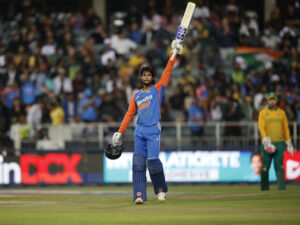
Virat Kohli’s Decline in Form: Sanjay Manjrekar Blames Technique Over Age
Cricket’s most prolific modern-day batsman, Virat Kohli, has found himself under the scanner in recent months. Once the epitome of consistency, the former Indian captain’s bat has been relatively silent compared to his historic highs. Cricket commentator Sanjay Manjrekar, known for his forthright opinions, has waded into the debate with a controversial assessment: Kohli’s struggles are not a function of age or diminishing reflexes but stem from flaws in his technique.
Manjrekar’s critique, while bold, has stirred intense debate among cricket fans and experts. Traditionally seen as one of the most technically sound batsmen, Kohli’s dominance across formats for over a decade has been lauded as a masterclass in adaptability. However, Manjrekar insists that recent dismissals highlight technical frailties rather than the inevitable decline associated with age.
The Technical Flaws in Question
According to Manjrekar, Kohli’s approach against certain deliveries, particularly those outside off stump, has been his undoing. “His tendency to chase balls he once dominated has become more pronounced. There is a visible inconsistency in footwork, which has led to his vulnerability against swinging deliveries,” Manjrekar commented in a recent analysis.
Kohli’s statistics support the narrative to an extent. His struggles in England and his mixed performances in the World Cup showcase a decline against both pace and spin. Critics argue that his eagerness to assert dominance has made him predictable, exposing him to well-planned bowling attacks.
This contrasts with Kohli’s peak years, where his disciplined leave outside off stump and impeccable balance on the crease made him virtually unbreachable. Manjrekar asserts that Kohli’s reliance on muscle memory has overshadowed the adaptability that once defined his game.
The Role of Age vs Technique
At 35, Kohli is not yet at the twilight stage of his career. Comparisons with other greats like Sachin Tendulkar, who adapted their technique to prolong their careers, are inevitable. “It’s not about aging. Kohli’s reflexes are intact. What’s missing is the technical sharpness that made him stand apart,” Manjrekar said. The statement challenges the conventional wisdom that age-related decline begins to surface at this stage for most athletes.
Critics of Manjrekar’s view argue that mental fatigue, compounded by the pressure of expectations and a grueling cricketing calendar, could be more to blame than pure technique. Kohli has admitted to occasional mental struggles, raising the question of whether his recent slump is more psychological than physical or technical.
The Bigger Picture
Manjrekar’s assessment, while controversial, touches on a broader reality. In the cutthroat world of modern cricket, even the best cannot afford to rest on their laurels. Kohli, once the gold standard for consistency, is now being analyzed with the same ruthlessness that once defined his batting.
For Kohli fans, Manjrekar’s critique might sting, but it also underscores the high expectations associated with his name. As India’s cricketing talisman works to rediscover his form, whether through technical adjustments or a change in mindset, the cricketing world will be watching closely.
Kohli has proved doubters wrong before; the question is, will he do it again—and how?
This narrative is certain to polarize opinions, with some backing Manjrekar’s detailed critique and others questioning the wisdom of singling out technique as the primary cause of Kohli’s decline. One thing is certain: the spotlight on Kohli’s bat has never been brighter—or heavier.






